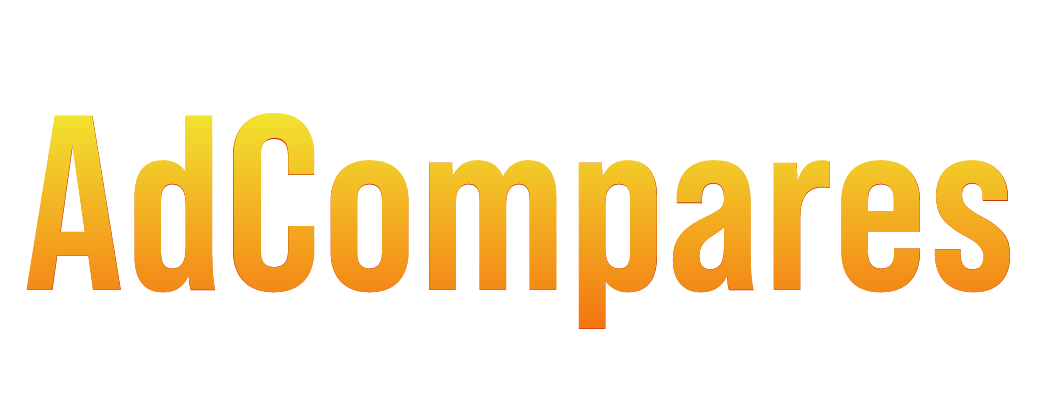Starting a lifestyle blog is a great way to express your personal experiences, hobbies, and expertise while engaging with an audience that shares similar interests. Lifestyle blogging covers a wide range of topics including travel, health, fashion, food, beauty, personal development, and everyday living. To succeed, it is crucial to establish a clear purpose, develop high-quality content, and optimize the blog for search engines. This guide provides a comprehensive step-by-step approach on how to start a lifestyle blog and share your unique perspective effectively.
How To Start A Lifestyle Blog
1. Choose Your Niche
To create a successful lifestyle blog, choose a niche that aligns with your interests, skills, and knowledge. A niche defines the main theme of your blog and allows you to attract a specific audience. Popular lifestyle niches include:
- Travel: Tips, experiences, and guides for travel enthusiasts.
- Health and Wellness: Information about fitness, nutrition, mental health, and well-being.
- Fashion and Beauty: Advice on styling, beauty products, makeup tutorials, and trends.
- Food and Cooking: Recipes, cooking tips, and reviews of different cuisines.
- Personal Development: Content focused on self-improvement, productivity, and motivation.
- Home Décor and DIY Projects: Ideas for decorating spaces, renovating, and crafting.
Selecting a niche helps in developing a consistent content strategy and building a dedicated readership.
2. Define Your Blog’s Purpose
Your blog should have a clear purpose or mission statement that explains what you aim to achieve and how it will benefit the readers. Defining your blog’s purpose can also help to shape your content and establish your authority within the chosen niche. Consider the following questions:
- What topics are you passionate about?
- What problems can you solve for your audience?
- What unique perspective or experience do you bring to the table?
Having a well-defined purpose helps keep the blog focused and provides direction for content creation.
3. Choose a Blogging Platform
Selecting the right blogging platform is essential for setting up your lifestyle blog. The platform you choose will affect the functionality, design, and management of your blog. Popular blogging platforms include:
- WordPress.org: Offers full control over the website and access to thousands of themes and plugins for customization.
- Wix: A drag-and-drop website builder that is user-friendly, suitable for beginners.
- Squarespace: Known for its sleek designs and built-in tools, ideal for bloggers who want a visually appealing site.
- Medium: Focuses on simplicity, suitable for writers who prioritize content over customization.
WordPress.org is widely preferred because it offers flexibility, scalability, and control over various aspects of the blog.
4. Get a Domain Name and Hosting
A domain name is your blog’s address on the internet (e.g., www.yourblogname.com). Choose a domain name that is easy to remember, reflects the blog’s niche, and includes keywords relevant to the lifestyle niche. Once you have a domain name, purchase a web hosting service to make the blog accessible online. Popular web hosting providers include:
- Bluehost: Offers affordable plans and integrates seamlessly with WordPress.
- SiteGround: Known for excellent customer support and performance.
- HostGator: Suitable for beginners due to its easy-to-use dashboard.
The combination of a domain name and hosting is essential for launching a lifestyle blog and maintaining an online presence.
5. Install WordPress and Choose a Theme
If you choose WordPress.org as your platform, you will need to install WordPress on your hosting account. Most hosting providers offer a one-click installation process for WordPress. After installing WordPress, select a theme that aligns with your blog’s niche and style. Themes determine the design and layout of your blog. Consider the following when choosing a theme:
- Responsiveness: Ensure the theme is mobile-friendly to provide a seamless experience across devices.
- Customization: Choose a theme that allows customization to match your brand.
- SEO-Friendly: Look for themes that are optimized for search engines.
Popular lifestyle blog themes include Astra, Divi, and OceanWP. These themes offer flexibility and are well-suited for lifestyle content.
6. Customize Your Blog
Customizing your blog is crucial for branding and providing a unique user experience. Customize the blog by:
- Adding a Logo: Design a logo that reflects your blog’s personality and niche.
- Choosing Colors and Fonts: Pick colors and fonts that are visually appealing and consistent with the blog’s theme.
- Setting Up Menus: Organize the menu to make navigation easy for visitors.
- Installing Essential Plugins: Add plugins for SEO (Yoast SEO), security (Wordfence), and performance (WP Super Cache).
Customization helps in creating a memorable brand identity and enhances user engagement.
7. Create High-Quality Content
Content is the backbone of a lifestyle blog. Creating high-quality content that provides value to readers is crucial for building a loyal audience. Follow these tips to produce engaging content:
- Address Readers’ Needs: Write about topics that solve readers’ problems, answer questions, or provide inspiration.
- Be Authentic: Share your personal experiences, opinions, and stories to connect with your audience.
- Use High-Quality Images and Videos: Visual content enhances the appeal of your blog posts. Use tools like Canva for image design and editing.
- Write Catchy Headlines: A compelling headline attracts readers and encourages them to click on your posts.
Consistency in content quality establishes credibility and authority within the lifestyle niche.
8. Optimize for Search Engines (SEO)
Search Engine Optimization (SEO) helps your blog rank higher on search engine results, increasing visibility and organic traffic. To optimize your blog:
- Use Keywords: Include relevant keywords in your titles, headings, and content.
- Optimize Meta Descriptions: Write concise meta descriptions that summarize your content and include keywords.
- Use Alt Text for Images: Add descriptive alt text to images to improve search engine indexing.
- Build Internal Links: Link to other relevant posts within your blog to keep readers engaged.
SEO optimization is an ongoing process that requires continuous monitoring and updating.
9. Promote Your Blog
Promoting your blog helps in driving traffic and gaining exposure. Use multiple channels to reach a broader audience:
- Social Media Marketing: Share your blog posts on platforms like Instagram, Facebook, and Pinterest.
- Email Marketing: Build an email list and send newsletters to keep subscribers informed.
- Guest Blogging: Write guest posts on other lifestyle blogs to reach new readers.
- Collaborate with Influencers: Partner with influencers who share a similar niche to expand your reach.
Consistent promotion of your blog across different channels helps in building a strong online presence.
10. Engage with Your Audience
Building a community around your blog involves engaging with readers. Interacting with your audience fosters loyalty and encourages repeat visits. Ways to engage with your audience include:
- Responding to Comments: Reply to comments on your blog and social media to show that you value readers’ feedback.
- Hosting Q&A Sessions: Engage your audience with live Q&A sessions on social media platforms.
- Running Contests and Giveaways: Encourage participation by offering prizes or rewards.
- Creating a Facebook Group or Forum: Build a community space where readers can share ideas, ask questions, and interact.
Active engagement with your audience strengthens the connection and boosts reader retention.
11. Monetize Your Blog
Once your blog gains traction, consider monetizing it to generate income. Popular monetization methods for lifestyle blogs include:
- Affiliate Marketing: Promote products or services and earn commissions on sales generated through your affiliate links.
- Sponsored Posts: Partner with brands to write posts about their products or services.
- Display Ads: Use advertising networks like Google AdSense to display ads on your blog.
- Sell Digital Products or Courses: Create and sell eBooks, courses, or guides related to your lifestyle niche.
Combining multiple monetization methods can increase revenue and make the blog sustainable in the long term.
12. Analyze Your Blog’s Performance
Monitoring your blog’s performance helps identify areas for improvement. Use analytics tools like Google Analytics to track key metrics:
- Traffic Sources: Identify where your visitors are coming from.
- Bounce Rate: Monitor the percentage of visitors who leave after viewing only one page.
- Average Session Duration: Check how long visitors spend on your blog.
- Conversion Rates: Measure the success of your monetization efforts.
Analyzing these metrics allows you to make data-driven decisions for improving your blog’s performance.
13. Stay Updated with Trends
Lifestyle trends evolve over time, and staying updated ensures that your content remains relevant. Follow industry blogs, social media trends, and lifestyle influencers to keep abreast of the latest developments. Updating older blog posts with new information also keeps the content fresh and valuable.
Conclusion
Starting a lifestyle blog involves careful planning, consistent content creation, and ongoing promotion. By choosing a niche, setting up the blog, creating high-quality content, optimizing for SEO, and monetizing the platform, you can build a successful blog that resonates with your audience. Engaging with readers and monitoring performance ensures continuous growth and relevance in the dynamic lifestyle blogging space.
Frequently Asked Questions (FAQs)
How much does it cost to start a lifestyle blog?
The cost of starting a lifestyle blog can range from $50 to $500, depending on the domain name, hosting, and premium themes or plugins used.
Can I start a lifestyle blog without any technical skills?
Yes, many blogging platforms like Wix, WordPress.com, and Squarespace offer user-friendly interfaces that do not require technical skills.
How often should I post on my lifestyle blog?
Consistency is key. Posting at least once or twice a week is recommended to keep the audience engaged and improve SEO.
Can I make a living from lifestyle blogging?
Yes, many lifestyle bloggers earn a full-time income through affiliate marketing, sponsored posts, ad revenue, and digital products.
How long does it take to see traffic on a new lifestyle blog?
It can take 3 to 6 months to see significant traffic growth, depending on content quality, SEO efforts, and promotional strategies.

